Explore the deep and fascinating history behind Battlefield 1's theaters of war
World War 1 was a real bastard. War is always terrible, but World War 1 marked this strange convergence of the old, 'gentlemanly' way to do war (which was to effectively stand in formation and wait to get shot), and the emergence of new technologies which facilitated in the rapid destruction of human lives. Powerful artillery cannons and the implementation of mustard gas turned battlegrounds into death zones, where the only way to survive was to build a trench and wait it out - if the trenchfoot, inclement weather, or influenza didn't kill you first.
Video games haven't really covered World War 1 in great depth (certainly not in the same way that Battlefield and Call of Duty have thoroughly explored World War 2) and it's easy to see why. WW2 has clearly defined heroes and villains, as the valorous Allied powers took down the nefarious Nazi regime, and it's immediately relatable to anyone who appreciates good-triumphs-over-evil stories. World War 1… doesn't really have that, which makes Battlefield's decision to go all the way back to the so-called 'Great War' all the more interesting. Since Battlefield 1 is - mercifully - one of the rare first-hand exposures to this brutal conflict we are going to get, I've dug into some of the history behind the war, offering a brief glimpse into the political machinations behind it, as well as the historical significance of the currently announced maps and DLC packs.
Origin of the war
World War 1 began as a web of alliances and treaties were called into action as a result of the assassination of Archduke Franz Ferdinand of Austria, whose death was effectively the match that lit the pool of gasoline which had been accumulating over centuries of imperialism. What started as a conflict between Austria-Hungary and the Kingdom of Serbia quickly spiraled into a massive global conflict between the Allies (made up of the United Kingdom and its British Empire, the Russian Empire, and France) and the Central Powers (made up of Germany and Austria-Hungary). Over time, the United States, Japan, and Italy eventually joined the Allies, while Bulgaria and the Ottoman Empire joined the Central Powers.
Because of this, there's really no 'good' or 'bad' side here, as people who would have likely been friends in the years leading up to the conflict found themselves on opposite sides based solely on which country they were from. Unlike World War 2, there's no clear side to demonize - just a pointless, years-long struggle that resulted in the death of over 15 million people. As such, it's possible for Battlefield 1's campaign - which is reported to take place across "multiple perspectives" - to showcase conflicts on both sides and multiple fronts of the long and bloody war.
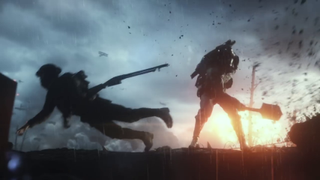
Battle of Verdun
We know that one of the potential locations of Battlefield 1 is the Argonne Forest in France, and considering Verdun's close proximity to it, we'll probably get to reenact moments from the Battle of Verdun. It's one of World War 1's most notable battles - mainly because this singular conflict lasted almost an entire year, and estimated casualties range around 1 million lives lost. All of this for a relatively small tract of French countryside, with the humble town of Verdun smack in the middle of it.
The idea behind the assault on Verdun was simple: the Germans believed that the French saw Verdun as an area of significant importance, and anticipated that the French would over-extend its resources to protect it. The French anticipated this attack, and reinforced Verdun with numerous forts to safeguard it from assault. This lead to a huge battle of attrition, as both sides dug in, with Germans capturing and the French recapturing their forts for months. By December 1916, much of Germany's reinforcements had been diverted to the Battle of the Somme, and France had taken back much of what they had lost, finally putting an end to this savage battle.
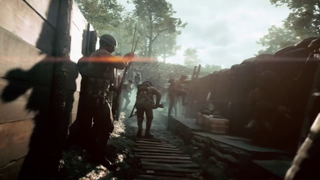
The Meuse-Argonne Offensive
The Battle of Verdun wasn't the only part of World War 1 to take place in this region of France. The Meuse-Argonne Offensive took place over 47 days, beginning in September 1918 and lasting until the Armistice of 11 November 1918. The battle stretched along a large part of Germany's defensive position on the Western Front (known as the Hindenberg Line), which included the Meuse River and the Argonne Forest - hence its name. As a part of the Hundred Days Offensive, the Battle of the Argonne Forest was one of the defining battles that would help bring World War 1 to a close.
Sign up to the 12DOVE Newsletter
Weekly digests, tales from the communities you love, and more
The battle was massive - the largest in US military history, in fact, with 1.2 million American soldiers (many of them experiencing combat for the first time here) joining the French and Siamese forces, along with a massive assortment of tanks, planes, and artillery. Led by General Pershing, the American forces pushed against the German defensive line north of the nearby town of Verdun, wearing down German troops until their eventual retreat.
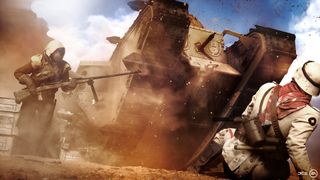
The Italian Front
We also know that there's going to be a map set in and around the Italian Alps, and if there's one word to describe the war on the Italian Front, it's 'stalemate'. Despite outnumbering Austro-Hungarian forces, Italy's offensives were either failures or minor pyrrhic victories thanks to the opposition's hold on the higher ground in the Italian Alps, as well as Italy's own constant lack of necessary supplies. Italy pushed against the Central Powers' defensive line 12 times (marked by the Battles of the Isonzo), and was repelled nearly every time. The mountainous terrain also proved perilous, as shellfire often caused avalanches, which could smother entire platoons without warning.
Italy eventually received assistance from Britain and France, both in the form of additional troops and strategic materials (like fuel, steel, and so forth). In October 1918, Italian forces mounted an offensive dubbed the Battle of Vittorio Veneto, and broke through a gap in the Central Powers' defensive line providing Italy with a decisive victory.
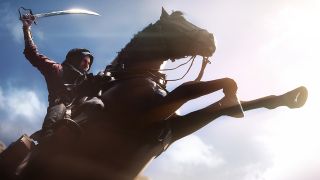
The Arab Revolt, and T. E. Lawrence
The Middle Eastern front of the war was by far the largest, if we're strictly talking the amount of land covered. And while it's likely we'll see conflict from other campaigns in the area, it's the Lawrence of Arabia DLC pack included in the Early Enlister Deluxe Edition that leads me to believe that Battlefield 1 will likely focus on the Arab Revolt.
The Arab Revolt began in 1916, and its goal was to use the instability brought about by World War 1 to gain independence from the Ottoman Empire and create an independent Arab nation. Britain, sensing this as an opportunity to undercut their rivals (as well as a way gain access to the oil-rich land of the region), sent several generals (including T. E. Lawrence, aka 'Lawrence of Arabia') to ally with the rebellion. These generals helped gather local tribes and nomadic Bedouin under one banner, and led the Arab Revolt to a handful of vital wins throughout the region with unconventional guerrilla warfare tactics (and lots of camels and horses). One of the largest victories occurred at the village of Tafileh, where Lawrence and his army defeated over 1000 Ottoman troops with only 40 casualties. Lawrence and Co. so thoroughly trounced the opposition that Ottoman forces began surrendering or fleeing at the mere sight of British troops.
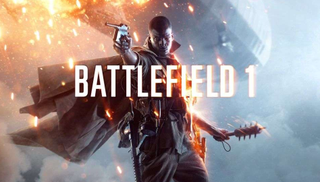
Harlem Hellfighters
The Early Enlister DLC pack also mentions the Harlem Hellfighters, and their story is as fascinating as it is tragic. The 369th Infantry Regiment was a squad of African American and Puerto Rican troops, and were given the nickname 'Harlem Hellfighters' by French and German soldiers because of their ferocity on the battlefield. The squadron saw the most combat out of any American regiment in World War 1, taking part in many of the Western Front's notable battles (like the aforementioned Meuse-Argonne Offensive). The regiment suffered numerous casualties, but also showed themselves as some of the Allied Powers' most capable fighters. This History Channel video recounts the story of how a Hellfighter by the name of Henry Johnson held off as many as 30 German soldiers with a knife and a jammed rifle which he used as an improvised club, while suffering 21 injuries and protecting his equally injured comrade. This story (among countless others) led the Hellfighters to return home one of the most decorated regiments of World War 1.
But the Harlem Hellfighters also brought to light the rampant racism toward black people in America at the time. For years, African Americans weren't allowed to serve their country, and only when the US was desperate for troops were they allowed in - and even then, they were given to the French, rather than being allowed to fight under an American banner. The French, however, harbored little to no racial prejudices toward them (and were incredibly grateful for the reinforcements), and took them in with open arms, treating them as equals during their time on the battlefield. The Harlem Hellfighters hoped to return home to a country that would accept them after their valiant successes on the battlefield, and were instead met with the same animosity as when they left. Henry Johnson was awarded the Croix de Guerre (the French military's highest honor) immediately after his incredible show of heroism, but died penniless in the US a few decades later because his injuries weren't noted, and as a result, he wasn't eligible for post-war benefits. Johnson wasn't awarded the Medal of Honor for his bravery by the United States until 2015.
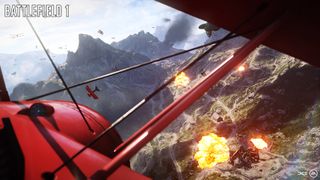
The Red Baron
The Early Enlister pack also includes a set of Red Baron DLC. No, I'm not talking about the frozen pizza - it's in reference to German cavalryman-turned-aviator Manfred von Richthofen, the ‘ace of aces’ himself. He's officially credited with over 80 victories during World War 1, which is pretty impressive, considering fighter planes at the time were little more than aerodynamic engines with machine guns attached to them. The Red Baron took part in several notable battles throughout the war, including the Battle of Verdun and the Battle of Arras (which was nicknamed 'Bloody April', thanks to the Red Baron's own victories against British air forces).
It'll be interesting to see how Battlefield 1 incorporates air combat into its gameplay. Because the power of human flight was still a relatively recent technological discovery, most air operations were tactical in nature, using the pilots' bird's-eye view of the battlefield to relay information to superior officers, mostly for artillery bombardments. While dogfights did erupt in the midst of larger ground-based conflicts, they were mostly as a result of trying to maintain control over aerial surveillance, rather than to directly attack infantry or artillery. Considering DICE is planning to fudge the history a bit in the name of entertainment where necessary, it's likely that air combat will be one of the areas that is likely to get some significant tweaks.

Assassin's Creed Shadows was originally envisioned without Yasuke, but Ubisoft wanted the full feudal fantasy: "We were sort of making a stealth tank, and it didn't quite work"

Assassin's Creed Shadows lead says dual protagonists are "a cool thing" the new action RPG "does better than what we've done in the past"










